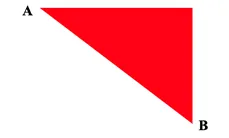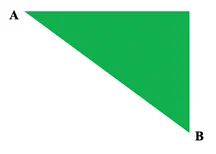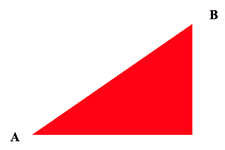Trade with XTrade Platform
CFDs are ‘contracts for difference’ – derivatives financial instruments designed to mirror the price movements of their underlying assets.
In other words, a CFD is priced just like the financial asset it represents.
If the price of the asset rises, the price of the CFD rises. If the price of the asset falls, the price of the CFD falls.
The trick to understanding how CFDs work is actually hidden in plain sight – it's a derivatives instrument. The price is derived from the price of the underlying asset.
CFD trading is a form of speculative trading. Other options include spread betting on financial instruments.
XTrade offers traders access to multiple different types of CFD products, including CFD shares, CFD indices, CFD commodities, CFD forex, CFD bonds, and CFD ETFs.
Each of these asset categories allows for greater diversification in your financial portfolio. A CFD is a speculative instrument that allows you to trade price movements of the underlying asset.
You don't actually take ownership of the underlying financial instrument – you are simply trading price movements.
Why Trade CFDs as Opposed to The Financial Instruments?
In a standard investment involving shares, forex, commodities, indices, or ETFs, the asset must appreciate at price.
When you buy and hold, price appreciation is necessary for profits to be generated. With trading, it's a different ballgame entirely.
The same assets can be traded in rising or falling markets with CFDs.
This speculative market allows you to use your own judgment when buying or selling CFDs online.
If you are optimistic about the asset, you are bullish and you buy the CFD. If you are pessimistic about the asset, you're bearish and you sell the CFD.
You're probably wondering how you can make money when an asset falls in the price?

CFDs are unique in that you can go long (bullish), or short (bearish) on the derivatives instrument.
If you go long, because your technical and fundamental analysis suggests price appreciation in the future, your profit is calculated as the difference between the buy price and the selling price.
If the selling price is higher than the buy price, that difference represents your profit. If the selling price is lower than the buy price, that difference represents your loss.
In the figure above, you purchase a CFD share at Price A and sell later at Price B. This is called Going Long on the CFD.
The entire green area represents your profit. However, in the figure below, Price B is lower than purchase Price A and this represents your loss.

An interesting thing happens when you Go Short on a CFD share, or any other instrument available at XTrade.
When you trade the CFD contract, you agree to buy the CFD at a future price that is lower than the present price that you immediately sold it for.
The difference represents your profit. You are effectively buying back the financial instrument that you borrowed from the seller at a future date, and you are pocketing the difference as profit.

Of course, it is possible that the price of the underlying financial instrument will not fall if you go short. It may actually rise in value.
If this happens, the degree of price appreciation represents your loss. In the figure below, you Go Short on the CFD at Point A, but the price of the underlying financial instrument rises to Price B.
When you Sell at Price A you have to Buyback at Price B. That represents a loss.

What types of CFDs are available at XTrade?
XTrade features a long list of CFDs across multiple asset categories. These include the following options:
- CFD Shares – these include shares in multiple markets all over the world. Popular options include Moderna, Coinbase, Apple, Google, McDonald’s, FedEx, and JP Morgan.
- CFD Indices – these include the Russell 2000, USA 30, US Dollar Index, USA 500, and US-Tech 100.
- CFD Commodities – Gasoline, Brent Oil, Cocoa, Soybean, Natural Gas, Heating Oil, Cotton, Copper, Coffee, Sugar, Palladium, and Wheat.
- CFD Forex – EUR/GBP, USD/CAD, CAD/CHF, GBP/JPY, NZD/USD, CAD/JPY, AUD/USD, NZD/JPY, EUR/USD, EUR/NZD.
- CFD Bonds – US 5Y-T-Note, 10Y Euro Bund, Gilt Long Government, US 10Y T-Note, and US 30Y T-Note.
- CFD ETFs – MSCI Brazil, Direxion Small Cap Bear, UltraShort S&P500, USO-Oil Fund.
Within each category of CFDs are multiple assets to trade. XTrade offers competitive spreads, with no commissions. There are no deposit or withdrawal fees charged to clients.
If you keep CFDs open after 10PM GMT, premium charges will be applied. For a full listing of Premium Sell and Premium Buy Charges for each product, click here
How Does Leverage & Margin Work with CFDs?
All traders have a limited budget to work with. Fortunately, you don’t have to invest all of your capital in a handful of trades. With leverage, you get to use only a small portion of your available capital to open any CFD trade at XTrade.
The precise amount of leverage will vary from one category to the next.
For example, shares like Moderna are available with leverage of 10:1. This means for every $1 of your capital that you invest in a Moderna CFD trade, you will get $10 worth of trading power.
Indices CFDs such as the Russell 2000 are also available with leverage of 10:1.
Commodity CFDs like Brent crude oil are available at XTrade with leverage of 10:1, while forex majors like USD/CAD are available with leverage of 30:1.
Bonds like the US 5Y T-Note come with 5:1 leverage, much like the USO-Oil Fund ETF.
It's always a good idea to check out the leverage on your preferred financial instrument to determine how much of your capital is required up front in order to open a position.
Leverage acts as a multiplier. It can increase your profits when your trades finish in the money, but it can also increase your losses when your trades finish out of the money.
Leverage should always be treated with respect. In the event that trade doesn't go the way you anticipated, your broker may require a margin call in order to cover the trade and keep it open.
In the absence of sufficient capital in your account, the trade will be closed out and you will incur the losses on the full value of the trade.
The margin amount – the money you front of your own capital – is not the only amount that you can lose on a trade. Leverage gives you magnified exposure to the financial markets.
The relationship between leverage and margin is easy to calculate. If the leverage is 10:1, your margin requirement is 1/10 = 10%. That means you need to front 10% of the value of the trade.
If the leverage is 5:1, that means the margin requirement is 1/5 = 20%. These percentages represent the deposit required of you to open the position.
Pros and Cons of CFD Trading
Pros
- Demo Trading Available
- Small Margin Requirement
- Hedge Against Market Volatility
- Easy to Trade CFDs – Buy or Sell
- Can Substantially Magnify Your Profits
- Effective Portfolio Diversification Strategy
- Generate an ROI in Rising or Falling Markets
Cons
- Margin Calls Can Result
- Expensive to Rollover CFDs
- Volatile Speculative Financial Instruments
- Can Incur Losses Greater Than Your Deposits
It should be pointed out that CFDs are best suited to short-term trading activity only. Holding CFDs over the long term is not possible because they become too expensive to maintain.
The holding costs of CFDs kick in at the end of the trading day.
If you have any positions that are still open in your account, they will be subject to rollover fees which can be positive or negative based on your individual trades and the holding rates.
Brokers make their money from the spreads – the difference between the buy price and the selling price.
There are also other ways to generate returns for brokers, such as financing charges, and hedging charges. Your margin amount can also be the broker's profit if the trade goes against you.
Tips for Trading CFD
CFD trading is inherently risky since it is speculation on the future price movement of an underlying financial instrument. Having said that, you can certainly improve your winning chances by doing your homework.
Careful and methodical research of your chosen financial instruments can certainly help you.
Use technical analysis (charts and graphs), and fundamental analysis (economic and financial factors) to make more informed decisions.
Always set goals when trading CFDs. Understand that markets can turn on a dime, at a moment’s notice.
Trade with your head and not with your heart. Emotionally-based trading tends to generate unfavorable results. Of course, you should always watch your bankroll like a hawk.
Never invest too much of your capital in any given trade, since concentration can result in substantial losses. Always diversify your portfolio to hedge against losses.
Conduct the necessary research into different types of trading strategies if you're looking to become a successful trader.
Consider scalping, day trading, or swing trading as part of your CFD trading regimen.
Set limits, and stick to your trading plan. One of the most important rules for trading CFDs, and other financial instruments is timing your trades to perfection.
Poorly-timed trades invariably result in losses. As a new trader, you definitely don't want to go all-in from the get-go.
Start small and build your way up.
Several other rules will hold you in good stead, notably demo trading before you trade for real money.
It's really important to understand how our trading platform works – WebTrader for PC, Mac, and Mobile - before you deposit and trade real money CFDs.
Familiarize yourself with the different trading options available to you, the charts, graphs, expiry dates, fees, commissions, leverage, margin requirements, et cetera.
Learn the lingo and make the trade. If your trade is moving against you, cut your losses immediately.
Employing each and every one of these CFD trading tips will hold you in good stead at XTrade.
Now that you understand the risks and rewards, you can confidently go about making that trade. Register now, and trade CFDs on our powerful platforms.
Open a Trading Account with XTrade
It takes less than 2 minutes to open an account with XTrade. Use Credit Card, Skrill or Bank Transfer to fund your account.
